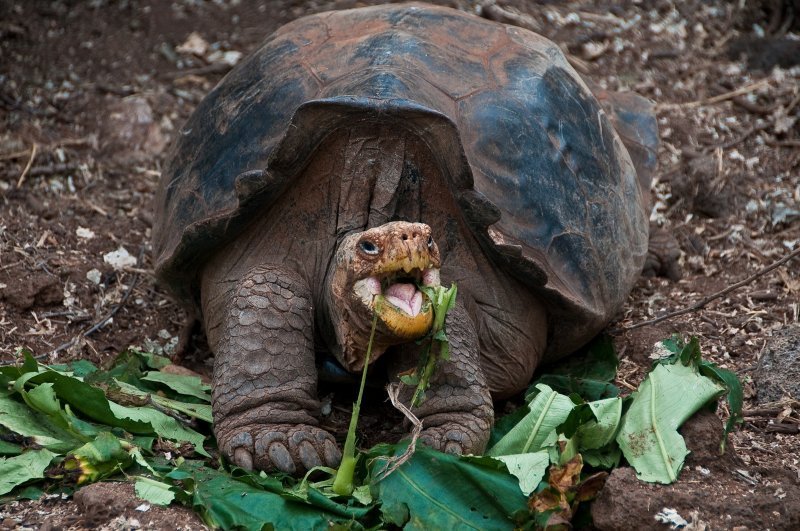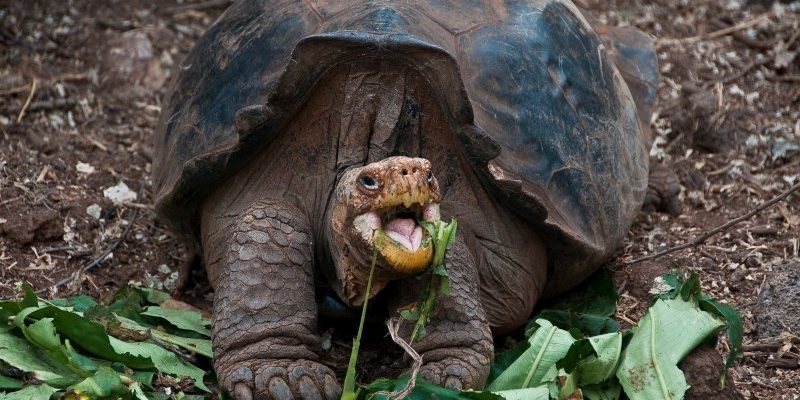
The Galápagos tortoise, native to the Galápagos Islands, is the largest living species of tortoise and can weigh over 500 pounds! They’re not exactly on the fast track to dinner; instead, they take their time, munching on various vegetation that grows in their habitats. So, what do these tortoises eat, and how do they go about finding and gathering their food? Let’s dive into their diets and get a closer look at their fascinating hunting strategies.
Understanding the Diet of the Galápagos Tortoise
The diet of the Galápagos tortoise is a blend of plant-based foods that reflects their unique island habitat. These tortoises are primarily herbivores, relying heavily on the lush vegetation that grows across the islands. You might be wondering what exactly they munch on, so let’s break it down.
- Grasses: A significant part of their diet, grasses are plentiful on the islands. Tortoises graze leisurely, selecting tender grass shoots.
- Leaves: They love to nibble on the leaves of shrubs and trees. The tortoises often reach high branches, stretching their necks to find a tasty morsel.
- Fruits: When in season, fruits like prickly pear and other native fruits provide a sweet treat and essential nutrients.
One interesting aspect of their diet is how it varies based on their specific island environment. For example, some islands may have more succulent plants, while others offer a mix of tougher, fibrous vegetation. This adaptability is crucial for survival, as it allows them to make the most of whatever food sources are available.
Foraging Techniques of the Galápagos Tortoise
Foraging is a critical survival skill for the Galápagos tortoise, and they have developed some interesting techniques for finding food. Unlike predators that hunt actively, these tortoises use a more methodical approach to gather their meals.
First, they develop a keen sense of their habitat. Over time, a tortoise will learn where to find the best patches of grass or the juiciest fruits. It’s almost like they have a mental map of their favorite dining spots! When they spot a potential meal, they’ll slowly make their way over, using their strong legs to navigate rocky terrain.
Next, you might be surprised to learn that Galápagos tortoises can be social eaters. They are often seen foraging together in groups. This not only gives them safety in numbers but also allows them to share knowledge about the best places to find food. Imagine a group of friends heading to a picnic — they might share food ideas and help each other discover hidden treats.
Water Sources and Hydration Habits
While most of their diet consists of vegetation, water is another vital part of the Galápagos tortoise’s survival. Surprisingly, these tortoises can go long periods without drinking, thanks to their ability to extract moisture from the plants they consume. However, they also seek out water sources when available.
During the rainy season, ponds and waterholes become crucial for hydration. Tortoises can often be seen drinking and soaking in shallow water. This behavior is not just about quenching thirst; it also helps them maintain optimal body temperature and health.
It’s essential for these creatures to stay hydrated, especially since the Galápagos Islands can be quite arid. You might even say their ability to manage water intake is one of their superpowers in adapting to such a unique environment.
Social Behavior and Feeding Habits
Social behavior plays a surprising role in the feeding habits of the Galápagos tortoise. While they are mostly solitary creatures, they don’t mind sharing a buffet with others from time to time. You might wonder why they would choose to forage in groups instead of going solo.
By foraging together, they can spot potential dangers more easily. If one tortoise senses a threat, the others are likely to pick up on it and retreat to safety. Plus, there’s something lovely about sharing a meal, even amongst tortoises! This social aspect can lead to a communal experience where they’ll enjoy their favorite food sources together, making the experience more enjoyable.
Interestingly, group foraging can lead to better efficiency. When a tortoise discovers a particularly good patch of food, others may follow and enjoy the tastiness as well. It’s a win-win situation, allowing them to eat better and stay alert.
Adapting to Environmental Changes
The Galápagos tortoise has adapted incredibly well to changes in its environment, especially regarding food availability. Due to various factors like climate change and human influence, these tortoises sometimes face challenges in finding food. Fortunately, their adaptability has helped them survive.
For example, during droughts, these tortoises might rely more heavily on tougher, more fibrous plants that they usually avoid. Their ability to shift their diet is crucial for their survival. Think of it like having a backup plan – they can change their preferences to utilize whatever foods are available.
Moreover, conservation efforts aimed at protecting their habitats play a vital role in ensuring their food sources remain stable. By maintaining the health of their ecosystems, we help support their long-term survival and the continuation of these unique feeding strategies.
The Role of Conservation in Food Security
Conservation efforts are key to ensuring the Galápagos tortoise has a reliable food supply. As we’ve seen, their diet depends on the availability of various plants, and safeguarding these environments is essential. Organizations are working tirelessly to protect their habitats from invasive species and human encroachment.
By controlling invasive plant species that compete with native vegetation, we can help restore balance in their ecosystems. This means more food options for the tortoises and improved opportunities for foraging. Conservation isn’t just about saving the tortoises; it’s about fostering the entire ecosystem they rely on.
Furthermore, education plays a significant role in conservation efforts. The more people understand the importance of protecting the Galápagos Islands, the better chance we have of preserving this incredible species. After all, healthy tortoises mean healthy ecosystems!
The diet and hunting strategies of the Galápagos tortoise tell a story of adaptation, resilience, and the delicate balance of nature. By understanding what these magnificent creatures eat and how they find food, we gain valuable insight into their lives and the ecosystems they inhabit.
With their unique foraging techniques, social behaviors, and adaptability to environmental changes, Galápagos tortoises exemplify the intricate relationships between species and their habitats. As we continue to support conservation efforts, we not only help secure the future of these remarkable tortoises but also ensure the health of the ecosystems they call home.
So, the next time you think about the Galápagos tortoise, remember the fascinating journey each one takes to find its next meal. It’s not just about survival; it’s about thriving in an ever-changing world, one leaf at a time.

